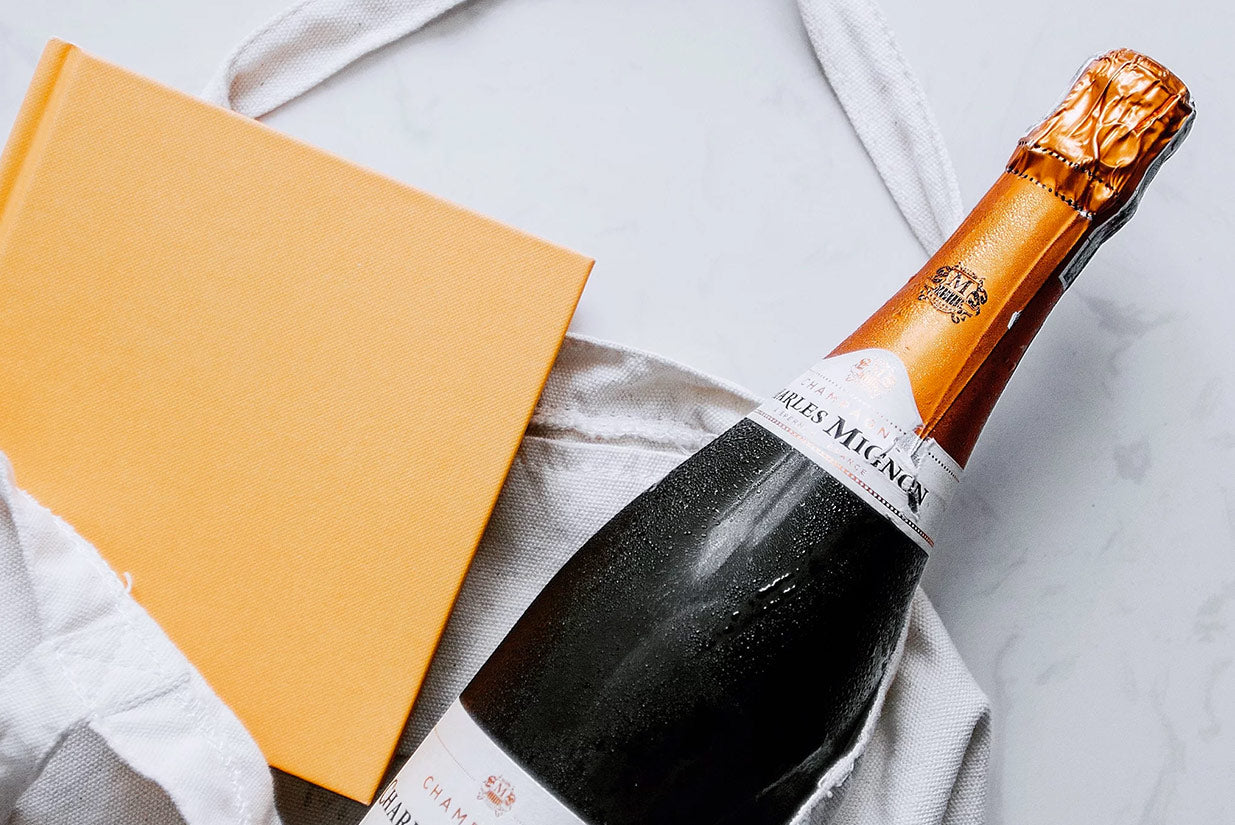How to Properly Open Sparkling Wine

Whether working the floor or simply hosting guests at home, knowing how to properly open a bottle of sparkling wine is step number one to offering impeccable wine hospitality to your guests. As festive (and messy) as a loud pop and fizzy overflow can be, opening a bottle of sparkling should actually create minimal noise and draw zero attention to the process. Not sure what we mean? Follow this quick tutorial for a future full of mess-free sparkling wine endeavors!
Step 1: Remove Foil
Generally, most bottles of sparkling wine will have plastic tab and perforated edge for easy foil removal. However, using the knife on a classic corkscrew is always a safe bet. Simply cut the foil where you would on any other bottle of wine and remove.
Step 2: Loosen Cage (and keep on bottle!)
Place your thumb over the top of the cage, and with the other hand, twist the wire cage six times to fully loosen it. DO NOT remove the cage from the bottle! The cage will remain on the bottle during the entire opening process.
Step 3: Twist Bottle, Not Cork
Contrary to popular belief, one should actually twist the bottle of wine to release the cork, not the cork itself. Tilt the bottle at a 45 degree angle (not pointing at anyone, of course!), with one thumb pressed down on the top of the cork and the same hand wrapped around the neck of the bottle. Place the other hand on the base of the bottle and gently rotate, releasing the cork. The bottle may be fully rotated or simply half-turned back and forth, whichever is easiest.
Step 4: Release Cork
Pressure will begin to build and the cork will begin shifting out of the bottle. Keep your thumb/hand over the cork and cage at all times! When the cork is near release, simply let it go on its own, releasing the cork and cage into your hand.
A few tips!
- Holding the bottle at an angle for a few seconds after opening will further assure that wine doesn’t spill out of the bottle.
- Make sure your bottle of sparkling is nicely chilled! Allowing a bottle to chill will decrease pressure within the bottle, diminishing the chances of wine overflow.
- Serving sparkling wine in white wine glasses, as opposed to traditional flutes, will allow for a better opening of aromas and more substantial tasting experience-- though we certainly love the festivity of Champagne served in a flute glass. Enjoy your sparkling wine in whichever glassware you prefer!
Cheers!


